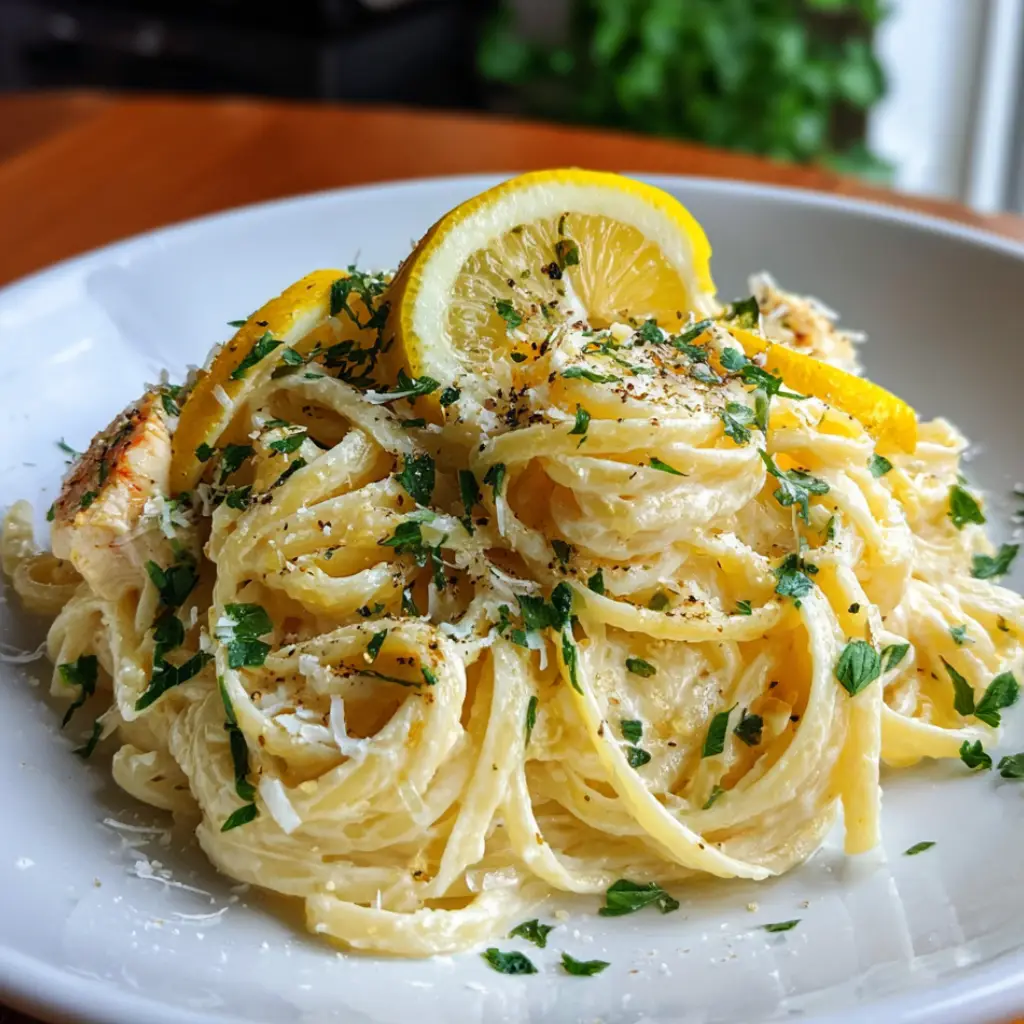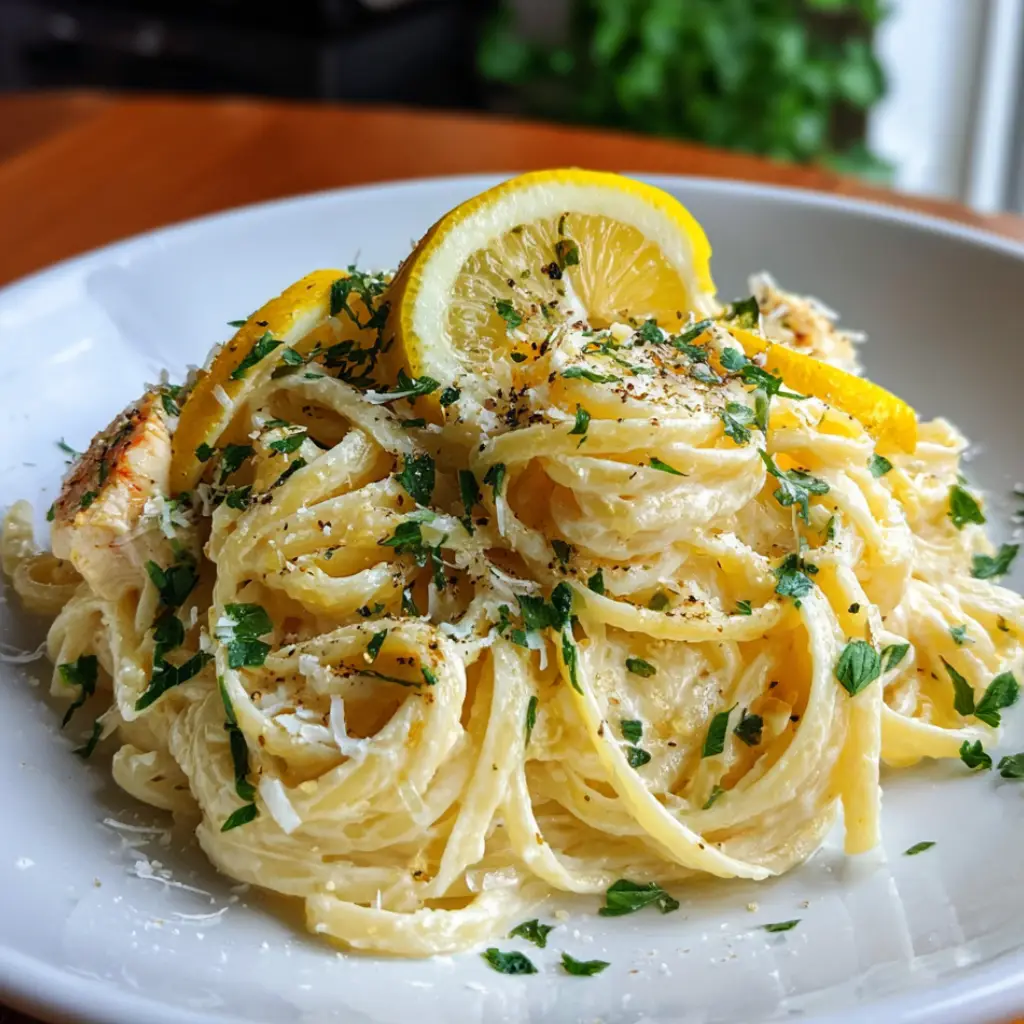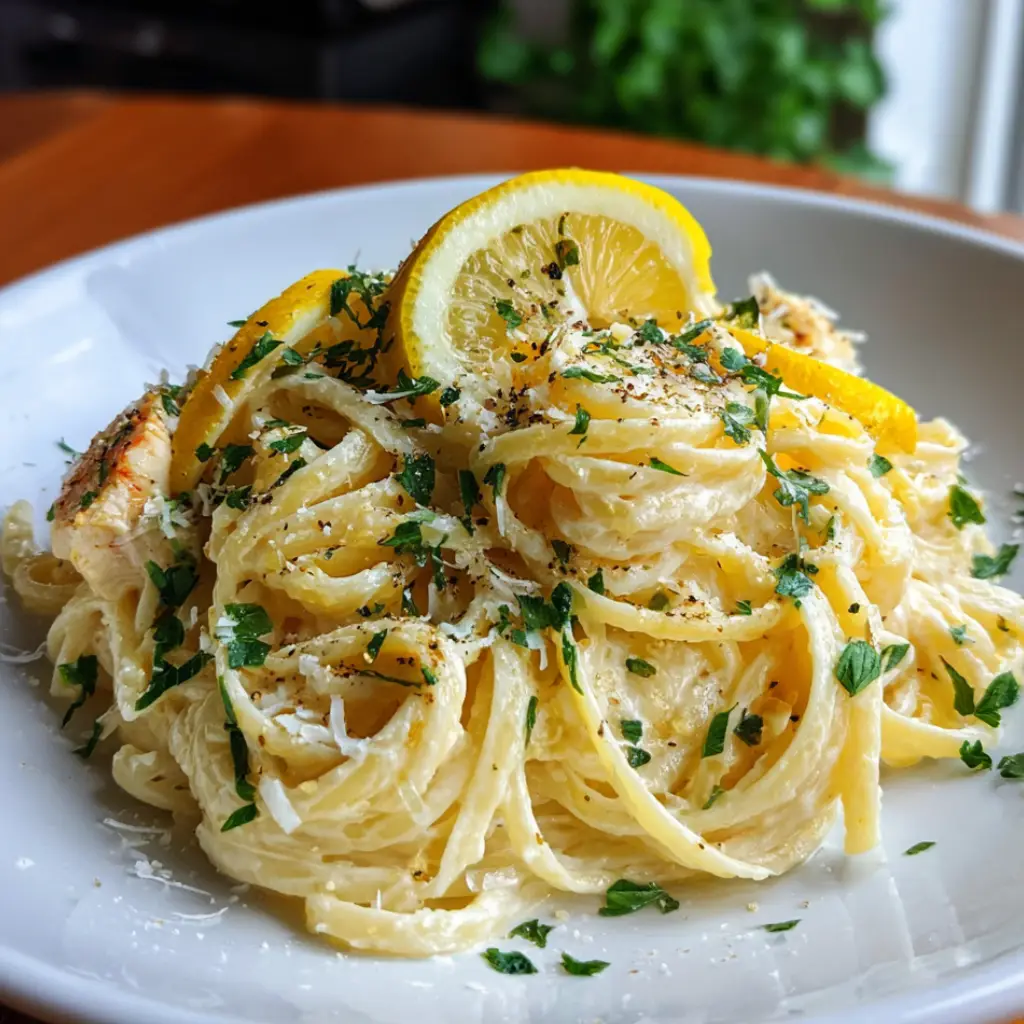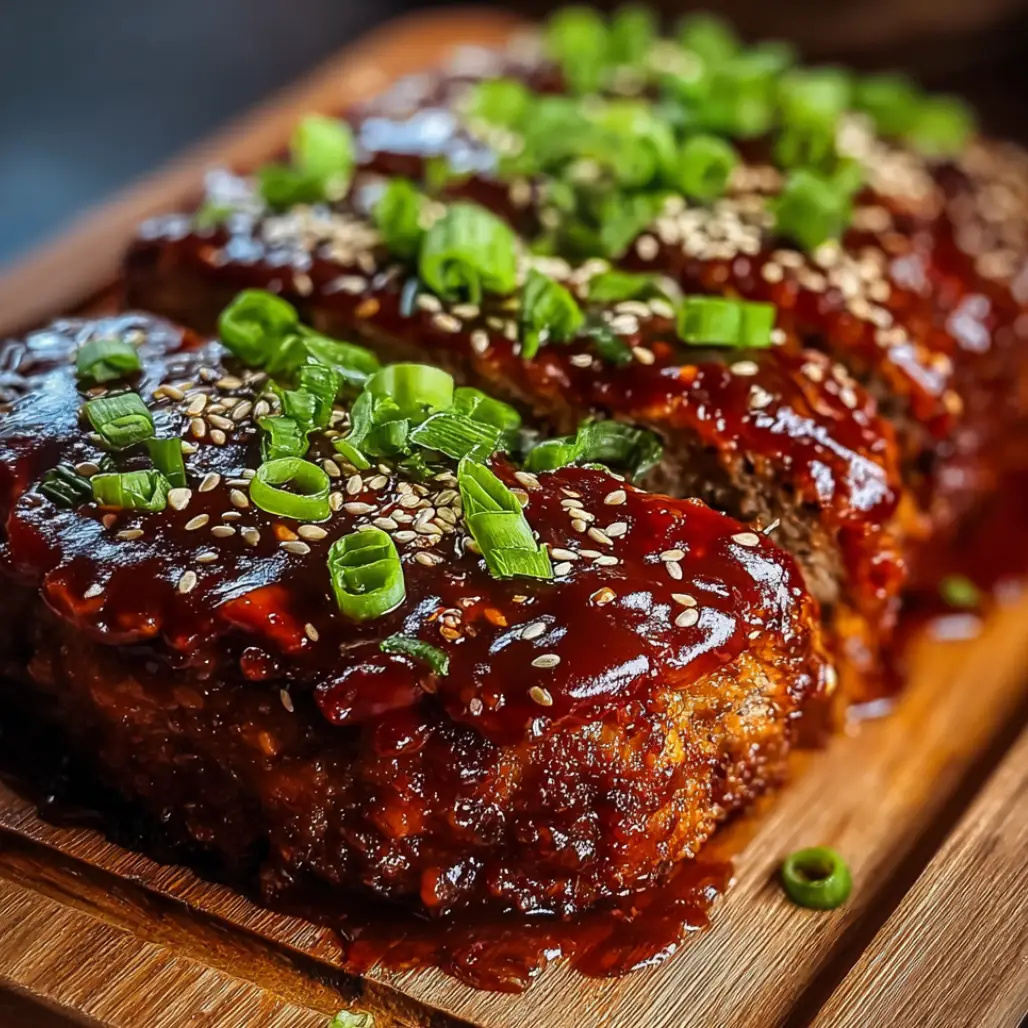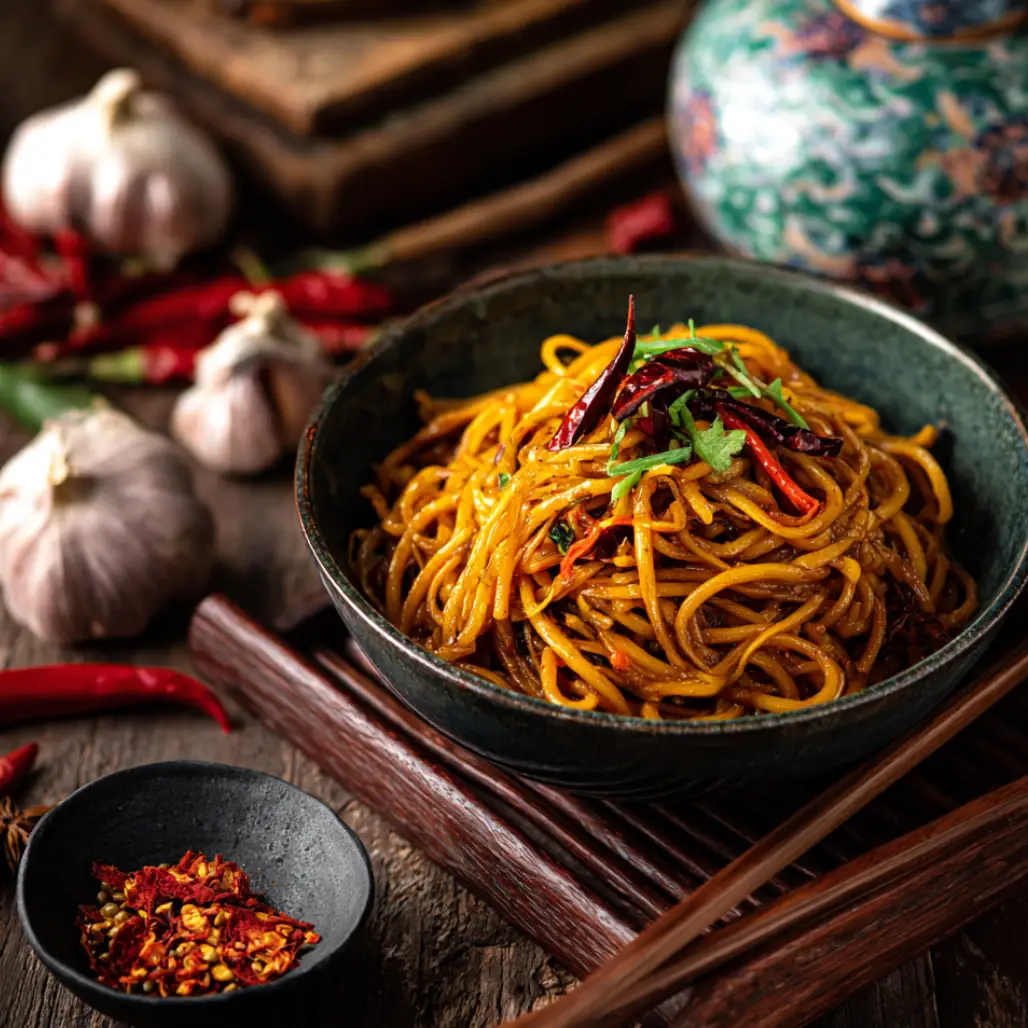| Prep Time: 5 minutes | Cook Time: 15 minutes | Total Time: 20 minutes | Serves: 4 |
|---|
Why Lemon Ricotta Pasta with Spinach Deserves Your Attention
The remarkable versatility of lemon ricotta pasta with spinach makes it an invaluable addition to your culinary repertoire because it serves equally well as a satisfying weeknight dinner for busy families, an impressive dish for entertaining guests, or a comforting meal when you need something nourishing and delicious without spending hours in the kitchen. This exceptional pasta dish demonstrates how traditional Italian cooking principles of using high-quality ingredients in simple preparations can create extraordinary results that satisfy both your taste buds and your desire for wholesome, home-cooked meals that bring people together around the dinner table.
The nutritional benefits of this dish extend far beyond its delicious taste because the combination of ricotta cheese and spinach provides substantial amounts of protein, calcium, iron, and vitamins that support overall health while delivering the complex carbohydrates from pasta that provide sustained energy for busy lifestyles. Unlike heavy cream-based pasta sauces that can leave you feeling sluggish, the light yet creamy texture of ricotta creates satisfaction without overwhelming richness, making this dish perfect for those who want indulgent flavors without the heaviness that often accompanies traditional cream sauces.
The psychological comfort that comes from preparing and enjoying lemon ricotta pasta with spinach cannot be overstated because the process of creating this dish involves gentle, meditative cooking techniques that allow you to unwind from stressful days while filling your kitchen with the enticing aromas of garlic, lemon, and herbs that signal home and comfort to everyone in your household. The visual appeal of this dish, with its vibrant green spinach leaves and creamy white sauce dotted with golden lemon zest, creates an Instagram-worthy presentation that makes everyday meals feel special and celebratory.
Essential Ingredients for Perfect Lemon Ricotta Pasta with Spinach
Creating exceptional lemon ricotta pasta with spinach requires carefully selected ingredients that work together to achieve the perfect balance of flavors and textures because each component plays a crucial role in delivering the restaurant-quality results that make this dish so memorable and satisfying.
Pasta – 12 ounces of your preferred shape, with short pasta varieties like rigatoni, penne, or fusilli working exceptionally well because their ridges and curves capture the creamy ricotta sauce effectively, while long pasta like spaghetti or linguine creates elegant presentation and allows the sauce to coat each strand beautifully.
Whole Milk Ricotta Cheese – 1 cup of high-quality whole milk ricotta provides the creamy foundation of your sauce because its mild, slightly sweet flavor and smooth texture create the perfect canvas for the bright lemon and savory garlic, while lower-fat versions lack the richness and creaminess that make this dish truly exceptional.
Fresh Baby Spinach – 5 ounces of baby spinach leaves offer tender texture and vibrant color because they wilt quickly and integrate seamlessly into the pasta without becoming tough or stringy, providing essential nutrients while adding visual appeal and earthy flavor that complements the richness of the ricotta.
Fresh Lemon – Zest and juice from 1 large lemon deliver the bright acidity that transforms this dish from ordinary to extraordinary because the zest provides aromatic oils that perfume the entire dish while the juice adds the tartness that balances the richness of cheese and creates complexity in every bite.
Freshly Grated Parmesan Cheese – 1/2 cup of authentic Parmigiano-Reggiano adds nutty depth and umami richness because its sharp, complex flavor enhances the mild ricotta while providing the salty element that ties all the flavors together in perfect harmony.
Fresh Garlic – 3 cloves of minced garlic provide aromatic foundation because their pungent sweetness when properly cooked creates the savory base that supports all the other flavors without overwhelming the delicate ricotta and lemon combination.
Extra Virgin Olive Oil – 2 tablespoons of high-quality olive oil serve multiple purposes because it carries flavors, prevents sticking, and adds richness while contributing its own fruity notes that enhance the Mediterranean character of the dish.
Salt and Black Pepper – Kosher salt and freshly ground black pepper are essential for seasoning because they enhance all the other flavors and ensure that every element of the dish reaches its full potential.
The Art of Creating Perfect Lemon Ricotta Pasta with Spinach
Mastering the technique of lemon ricotta pasta with spinach requires understanding the delicate balance between timing, temperature, and ingredient preparation because even simple dishes benefit from thoughtful execution that elevates good ingredients into extraordinary dining experiences.
The foundation of exceptional results begins with proper pasta cooking technique because achieving the perfect al dente texture requires attention to timing and water temperature, while simultaneously preparing your ricotta mixture ensures that everything comes together seamlessly when the pasta is ready. Understanding the role of pasta cooking water becomes crucial because the starchy, salty liquid serves as both a sauce base and a tool for adjusting consistency, making the difference between a thick, gluey sauce and a silky, restaurant-quality finish.
Temperature control plays a vital role in preventing common mistakes that can ruin the dish because ricotta can curdle if exposed to too much heat, while spinach can become slimy if overcooked, and pasta can become mushy if timing isn’t carefully managed. The key lies in understanding that this dish relies on gentle heat and residual warmth rather than aggressive cooking, allowing the ingredients to meld together naturally while preserving their individual characteristics.
The timing of ingredient additions creates the rhythm that ensures perfect results because spinach needs just enough time to wilt without losing its vibrant color, ricotta requires gentle incorporation to maintain its creamy texture, and lemon juice should be added at the right moment to preserve its bright flavor while preventing any curdling that could compromise the sauce’s smoothness.
Step-by-Step Instructions for Lemon Ricotta Pasta with Spinach Mastery
Follow these detailed instructions to create lemon ricotta pasta with spinach that rivals the best Italian restaurants because proper technique and timing ensure consistent results that will make this dish a regular feature in your dinner rotation.
Step 1: Prepare Your Pasta Water Fill a large pot with water and add a generous amount of salt, using approximately 1 tablespoon of kosher salt per quart of water because properly seasoned pasta water should taste like the ocean and provides the essential seasoning that penetrates the pasta during cooking. Bring the water to a rolling boil over high heat, ensuring that you have enough water to allow the pasta to move freely without sticking together during the cooking process.
Professional Tip: The pasta water becomes an essential ingredient in your sauce, so taste it to ensure proper seasoning before adding your pasta because under-salted water will result in bland pasta that cannot be corrected later in the cooking process.
Key Points: Use a large pot to prevent overcrowding, maintain a vigorous boil throughout cooking, and never add oil to your pasta water because it prevents the sauce from adhering properly to the cooked pasta.
Step 2: Cook the Pasta to Perfection Add your pasta to the boiling water and cook according to package directions until it reaches al dente texture, stirring occasionally to prevent sticking because properly cooked pasta should have a slight firmness when bitten while being fully cooked through. During the last minute of cooking time, add the fresh spinach directly to the pasta pot because this timing allows the spinach to wilt perfectly without overcooking while absorbing some of the pasta’s starchy cooking water.
Professional Tip: Reserve 1 cup of pasta cooking water before draining because this starchy liquid will be essential for creating the perfect sauce consistency and can be gradually added to achieve the ideal texture.
Key Points: Test pasta doneness by tasting rather than relying solely on package timing, add spinach during the final minute of pasta cooking, and work quickly once pasta is drained to prevent it from cooling and becoming sticky.
Step 3: Create the Ricotta Sauce Base While the pasta cooks, combine ricotta cheese, freshly grated Parmesan, minced garlic, lemon zest, and a pinch of salt and pepper in a large mixing bowl because preparing the sauce components in advance ensures smooth integration when the hot pasta is added. Whisk these ingredients together until well combined, creating a smooth base that will transform into a silky sauce when pasta water is incorporated.
Professional Tip: Use room temperature ricotta cheese because cold ricotta can seize when hot pasta water is added, creating lumps that are difficult to smooth out and compromise the final texture of your sauce.
Key Points: Zest the lemon before juicing to make the process easier, use freshly grated Parmesan for best flavor and melting properties, and ensure all ingredients are well combined before pasta addition.
Step 4: Combine Pasta and Sauce Drain the pasta and spinach, then immediately transfer them to the bowl containing the ricotta mixture because the residual heat from the pasta will gently warm the ricotta and begin the emulsification process. Add 1/2 cup of the reserved pasta water and begin tossing vigorously with tongs or a large spoon because this vigorous mixing action helps create the creamy consistency that makes this dish so appealing.
Professional Tip: Add pasta water gradually and toss continuously because too much liquid at once can make the sauce watery, while insufficient mixing prevents proper emulsification that creates the signature creamy texture.
Key Points: Work quickly while pasta is still hot, add pasta water incrementally until desired consistency is achieved, and toss thoroughly to ensure even coating of all pasta pieces.
Step 5: Final Seasoning and Presentation Add fresh lemon juice gradually while continuing to toss the pasta because the acidity brightens all the flavors and adds the signature tang that makes this dish so refreshing. Taste and adjust seasoning with additional salt, pepper, or lemon juice as needed because proper seasoning is crucial for bringing all the flavors into perfect balance that showcases each ingredient.
Professional Tip: Add lemon juice at the end of the cooking process because adding it too early can cause the ricotta to curdle, and taste before adding more because lemon intensity can vary significantly between individual fruits.
Key Points: Season incrementally and taste frequently, serve immediately while hot, and garnish with additional Parmesan and fresh black pepper for restaurant-quality presentation.
Professional Tips for Lemon Ricotta Pasta with Spinach Excellence
Elevating your lemon ricotta pasta with spinach from good to extraordinary requires understanding professional techniques that ensure consistent results and maximum flavor impact because small details can make significant differences in the final outcome.
Ingredient quality becomes paramount when working with simple preparations because each component must perform at its best to create the harmonious balance that makes this dish so appealing. Choose ricotta from the refrigerated cheese section rather than shelf-stable varieties because fresh ricotta has superior texture and flavor that directly impacts the final result, and seek out whole milk versions that provide the richness necessary for a truly satisfying sauce.
Pasta shape selection affects both flavor distribution and visual appeal because shapes with ridges or curves hold the ricotta sauce more effectively than smooth varieties, while the size should be appropriate for comfortable eating without requiring excessive cutting or manipulation. Consider the dining context when choosing pasta shapes because family dinners might benefit from easier-to-eat varieties while entertaining situations could call for more elegant presentations.
Timing coordination becomes essential when preparing this dish because pasta waits for no one, and having all components ready before the pasta finishes cooking prevents the common mistake of overcooked pasta or separated sauce that can ruin an otherwise perfect meal. Prepare your ricotta mixture, grate your cheese, zest your lemon, and wash your spinach before starting the pasta cooking process.
Creative Variations to Explore
The versatility of the basic lemon ricotta pasta with spinach formula allows for numerous creative adaptations that cater to different tastes, dietary requirements, and seasonal ingredient availability because understanding the fundamental technique enables confident experimentation with alternative ingredients.
Protein-Enhanced Version transforms this vegetarian dish into a complete meal by adding grilled chicken, pan-seared shrimp, or flaked salmon because these proteins complement the creamy ricotta and bright lemon flavors while providing additional substance for heartier appetites. Cook proteins separately and fold them in during the final tossing stage to prevent overcooking and maintain optimal texture.
Seasonal Vegetable Variations accommodate different times of year and personal preferences by substituting or adding vegetables like asparagus in spring, zucchini in summer, or roasted butternut squash in fall because these alternatives provide different flavors and textures while maintaining the dish’s essential character. Prepare vegetables appropriately for their type, with some requiring pre-cooking while others can be added raw during the final assembly.
Herb-Enhanced Versions incorporate fresh herbs like basil, mint, or parsley to create more complex flavor profiles because these aromatic additions provide freshness and complexity that elevates the dish beyond its simple base. Add delicate herbs after cooking to preserve their flavor and color, while heartier herbs like thyme or oregano can withstand gentle cooking.
Dairy-Free Adaptations use cashew-based ricotta alternatives or other plant-based cheese substitutes to accommodate dietary restrictions because these products can create similar textures and flavors when properly prepared and seasoned, making the dish accessible to vegan diners without sacrificing satisfaction.
Perfect Pairing Ideas for Your Lemon Ricotta Pasta with Spinach
Creating a complete dining experience around lemon ricotta pasta with spinach involves selecting complementary dishes that enhance rather than compete with the delicate flavors because thoughtful menu planning elevates a simple pasta dish into a memorable meal.
Light appetizers provide excellent preparation for the creamy pasta because they stimulate the appetite without overwhelming the palate, and you can explore creative options in snacks appetizers that complement Italian flavors. Consider serving bruschetta with fresh tomatoes and basil, antipasto platters with olives and cured meats, or simple cheese and crackers that echo the dairy elements in your main dish while providing textural contrast.
Fresh salads create perfect balance against the richness of ricotta because their crisp textures and bright acidity cleanse the palate between bites of creamy pasta. Discover inspiring salads that incorporate Mediterranean ingredients like arugula with lemon vinaigrette, caprese salad with fresh mozzarella and basil, or mixed greens with balsamic dressing that complement without overwhelming the pasta’s delicate flavors.
Complementary side dishes can round out the meal while providing additional nutritional value, and exploring perfect sides offers inspiration for vegetables and starches that work harmoniously with pasta dishes. Roasted vegetables like asparagus or broccoli provide healthy contrast, while garlic bread offers indulgent comfort that many diners expect with Italian-inspired meals.
Wine pairings enhance the dining experience because the right beverage can highlight the dish’s flavors while providing palate cleansing between bites, and options in refreshing beverages might inspire creative non-alcoholic alternatives that complement the meal’s Italian character.
Discover More Culinary Adventures
Expanding your pasta-making skills beyond lemon ricotta pasta with spinach opens exciting possibilities for creating diverse Italian-inspired meals because understanding fundamental techniques allows you to confidently tackle more complex recipes and seasonal variations.
Morning meal inspirations might seem unrelated to pasta dishes, but exploring breakfast favorites can provide ideas for incorporating ricotta cheese into other meals like breakfast crepes, ricotta pancakes, or morning grain bowls that showcase this versatile ingredient’s potential beyond traditional pasta applications.
Sauce-making techniques transfer beautifully to other culinary applications, and investigating flavored dips marinades can inspire new ways to use ricotta cheese in appetizers, sandwich spreads, or vegetable dips that showcase similar flavor profiles while serving different purposes in your meal planning repertoire.
Complementary cooking methods enhance your overall kitchen skills while providing alternatives for serving ricotta and spinach combinations, and exploring savory sides offers inspiration for dishes like stuffed shells, ricotta-stuffed vegetables, or grain-based salads that incorporate similar ingredients in different presentations.
Sweet applications of ricotta cheese deserve exploration because this versatile dairy product stars in numerous dessert recipes that showcase its creamy texture and mild flavor in cannoli, cheesecakes, and fruit-based desserts that provide satisfying conclusions to Italian-themed meals.
Storage Guidelines for Optimal Results
Understanding proper storage techniques for lemon ricotta pasta with spinach ensures that you can enjoy leftovers safely while maintaining the best possible texture and flavor because ricotta-based sauces require specific handling to prevent separation and maintain food safety.
Refrigeration protocols require immediate cooling and proper container selection because dairy-based pasta dishes can develop harmful bacteria if left at room temperature for extended periods, making prompt refrigeration essential for food safety. Transfer cooled pasta to airtight containers within two hours of cooking, ensuring that containers are properly sealed to prevent contamination and maintain moisture levels that prevent the pasta from drying out.
Reheating techniques become crucial because ricotta can separate and become grainy when subjected to high heat or rapid temperature changes, making gentle reheating methods essential for preserving the dish’s creamy texture. Use low heat on the stovetop with added pasta water or milk to restore creaminess, or microwave at reduced power levels with frequent stirring to ensure even heating without curdling the dairy components.
Texture expectations should be adjusted because reheated ricotta pasta will never perfectly match the freshly made version, though proper reheating techniques can create satisfying results that maintain most of the original appeal. The pasta may absorb some sauce during storage, making additional liquid necessary during reheating to restore the proper consistency.
Leftover utilization offers opportunities for creative meal planning because day-old lemon ricotta pasta can be transformed into pasta salad, baked pasta casseroles, or stuffing for vegetables that provide entirely different dining experiences while preventing food waste and maximizing your grocery investment.
The Science Behind Perfect Lemon Ricotta Pasta with Spinach
Understanding the scientific principles that govern successful lemon ricotta pasta with spinach helps you troubleshoot problems and adapt recipes confidently because knowledge of underlying chemical and physical processes enables better cooking decisions.
Emulsification science explains why pasta water creates smooth, creamy sauces because the starch released during pasta cooking acts as a natural emulsifier that helps fat and water components blend together smoothly, creating the silky texture that distinguishes restaurant-quality pasta from home cooking disasters. The proteins in ricotta also contribute to emulsification while providing structure and richness that creates satisfying mouthfeel.
Acid and dairy interactions become critical considerations because lemon juice can cause ricotta to curdle if added incorrectly, while understanding the proper timing and temperature prevents this common problem that ruins many attempts at creamy pasta sauces. The key lies in controlling temperature and adding acid gradually while maintaining movement to prevent proteins from clumping together.
Heat transfer principles govern cooking timing because spinach wilts rapidly due to its high water content and delicate cell structure, while pasta requires sustained heat for proper starch gelatinization that creates the desired texture. Understanding these different requirements helps coordinate timing for optimal results where each component reaches perfection simultaneously.
Flavor compound interactions explain why certain ingredient combinations work harmoniously because the compounds responsible for lemon brightness, ricotta creaminess, and spinach earthiness complement each other at molecular levels, creating complex taste experiences that satisfy multiple palate receptors and contribute to the dish’s overall appeal.
Troubleshooting Common Issues
Even experienced cooks encounter challenges when preparing lemon ricotta pasta with spinach because the combination of dairy, acid, and timing creates multiple opportunities for problems, though understanding common issues and their solutions ensures consistent success.
Problem: Ricotta sauce appears grainy or curdled rather than smooth and creamy Solution: This typically results from temperature shock or excessive acid addition, so ensure ricotta is at room temperature before combining with hot pasta, add lemon juice gradually while tossing continuously, and use pasta water to moderate temperatures and create smooth emulsification.
Problem: Sauce seems too thin and doesn’t coat pasta properly Solution: Insufficient starch content usually causes this issue, so reserve more pasta water during cooking, add it gradually while tossing vigorously to activate emulsification, and consider reducing heat while continuing to toss until proper consistency develops.
Problem: Spinach becomes slimy or loses its vibrant green color Solution: Overcooking causes both texture and color problems, so add spinach only during the final minute of pasta cooking, drain immediately when pasta reaches al dente, and handle gently during the final tossing to prevent crushing the delicate leaves.
Problem: Pasta clumps together and doesn’t integrate well with sauce Solution: This indicates insufficient pasta water or inadequate tossing, so ensure pasta moves freely during cooking, drain quickly without rinsing, and toss immediately with sauce while adding pasta water gradually to maintain proper texture.
Problem: Final dish lacks flavor depth and tastes bland Solution: Insufficient seasoning or poor ingredient quality typically causes this problem, so taste and adjust salt throughout cooking, use freshly grated Parmesan rather than pre-grated options, ensure lemon is fresh and aromatic, and consider the quality of your ricotta cheese.
Additional Inspirations for Italian-Themed Celebrations
Creating memorable Italian-themed dining experiences extends beyond serving excellent lemon ricotta pasta with spinach because incorporating complementary elements throughout your menu planning creates cohesive meals that transport diners to the Italian countryside.
Appetizer selections set the tone for Italian dining experiences, and exploring dishes that showcase similar ingredients in different preparations helps create thematic continuity throughout the meal. Consider preparing ricotta-stuffed mushrooms, spinach and cheese crostini, or lemon-herb marinated vegetables that echo your pasta’s flavors while providing textural variety and visual appeal.
Beverage pairings enhance the overall dining experience while supporting the Mediterranean theme that makes Italian meals so appealing to diners of all ages. Italian sodas with fresh fruit flavors, herbal teas, or wine-based sangrias provide options for different preferences while maintaining cultural authenticity that elevates casual dinners into special occasions.
Table setting and ambiance contribute significantly to the Italian dining experience because creating the right atmosphere helps guests appreciate the care and thought that went into meal preparation. Simple touches like cloth napkins, fresh herbs as centerpieces, or Italian music playing softly in the background create memorable dining experiences that extend beyond the food itself.
Conclusion
The remarkable appeal of lemon ricotta pasta with spinach lies in its perfect demonstration that exceptional meals don’t require complex techniques or exotic ingredients because this dish proves that simple, high-quality components prepared with care and attention can create dining experiences that rival expensive restaurant meals. This versatile recipe serves as both a reliable weeknight dinner solution and an elegant option for entertaining guests because its sophisticated flavor profile and beautiful presentation belie the simplicity of its preparation and the accessibility of its ingredients.
Mastering this dish provides a foundation for countless variations and adaptations because understanding the basic principles of combining ricotta, pasta, and bright flavors enables confident experimentation with seasonal ingredients, dietary modifications, and personal preferences that keep this recipe fresh and interesting throughout the year. The techniques learned while preparing lemon ricotta pasta with spinach transfer beautifully to other Italian-inspired dishes, making it an essential skill for anyone serious about home cooking and creating memorable meals for family and friends.
The satisfaction that comes from successfully preparing lemon ricotta pasta with spinach extends beyond the immediate pleasure of enjoying a delicious meal because it represents mastery of fundamental cooking principles that build confidence and inspire continued culinary exploration. Whether you’re cooking for busy weeknight dinners, romantic date nights, or casual entertaining with friends, this recipe delivers consistent results that bring people together around the table while celebrating the simple pleasure of sharing good food with the people you care about most.
Take the time to source quality ingredients, practice the techniques until they become second nature, and don’t be afraid to experiment with variations that reflect your personal tastes because the investment in learning to create exceptional lemon ricotta pasta with spinach will reward you with countless memorable meals and the satisfaction of knowing you can create restaurant-quality dishes in your own kitchen whenever the mood strikes.

